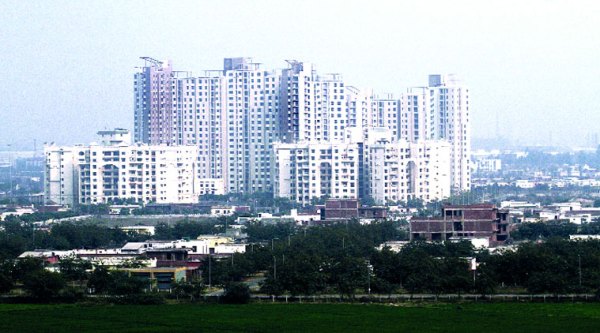
While green-shoots in the economy may be visible through rise in GDP growth numbers at 5.7 per cent for the quarter ended June 2014, and a dip in the current account deficit at 1.7 per cent, it may take some time before jobs in the economy and demand for housing grows. A recent report released by Knight Frank titled ‘India Real Estate Outlook’ shows that in the first half of the calendar ended June 2014, both the new launches for residential real estate and the sales volumes declined significantly. If the new launches fell by 32 per cent over that of H1 2013, the sales volume in the period dropped 27 per cent.
The report, however, projects that sales volume in the second half of calendar 2014 may rise by 26 per cent on account of the change in overall sentiments after the government announced sops for the housing sector in the Budget 2014-15 and economy recorded signs of growth.
Slowdown continues
The real estate residential market continues to suffer. Leading residential real estate markets in the country — Mumbai Metropolitan Region (MMR), National Capital Region (NCR), Bangalore, Chennai, Pune and Hyderabad continued to see a dip in their absorption rates as they declined between 14 per cent and 37 per cent. While the decline was slowest for Bangalore, the dip in absorption rate for NCR was highest at 37 per cent. A low absorption has resulted into a rise in the unsold inventory across the country. The unsold inventory for MMR by the end of June 2014 stood at 2,13,742 units whereas for the NCR region it stood at 1,67,000 units. Over the last three years, the unsold inventory in NCR has risen at a compounded annual growth rate of 15 per cent.
A low absorption rate is also leading to a rise in the QTS — the amount of time taken to sell the unsold inventory. While the QTS for Mumbai has risen to 12 (12 quarters needed sell the inventory), for NCR it has gone up from 5 in June 2012 to 9 in June 2014.
The dip in absorption rates and rise in unsold inventory on the other hand has also forced developers to delay their project launches. The report shows that the launch of new housing units declined between 16 per cent and 47 per cent. While the fall in new launches stood at 38 per cent in Mumbai, it was 43 per cent for the NCR region. Chennai and Bangalore saw a decline of 47 per cent and 16 per cent respectively. The situation may not reverse quickly as the developers who have seen a fall in demand over the last few months may practice caution while launching new projects. However it may be different for different regions.
“High unsold inventory and the poor response received by the new projects launched during H2 2013 and H1 2014 are expected to deter the developer community from launching any fresh projects in most of the cities during H2 2014,” said the report.
However, other market experts paint a different picture. “The demand from buyers and launches by developers have taken off beginning April as the sentiments improved on the back of the election results,” said Om Ahuja, CEO-Residential Services, JLL India.
The pick up
While the economic growth has started to take-off and the overall buyer sentiment is on a rise, the second half of the calendar is expected to see a rise in demand. The report has forecast that the sales volume in the six cities covered in the report are expected to grow at 26 per cent in the second half over that in corresponding period in the previous year. Mumbai and Bangalore are expected to lead in the recovery of sales volume with a growth of 49 per cent and 26 per cent respectively during this period.
However, the industry may not see a corresponding growth in the new launches as developers may first be looking to sell the piled up inventory. The report projects that the number of new launches may grow only at 5 per cent over the next six months. The two big markets — Mumbai and Delhi NCR are expected to see a growth of 10 per cent each in the new launches in the second half on account of rise in absorption rate.
How will it impact prices
Even as the residential real estate sales declined, the prices have only firmed up as a result of the rising input cost and higher borrowing cost. While they appreciated by 11 per cent in Bangalore in the first half of the calendar, those in Hyderabad rose by 9 per cent. The prices in the NCR on an average grew by 5 per cent whereas that in MMR increased by 4.2 per cent in the first half.
With an expected 49 per cent increase in absorption in the second half, Mumbai is expected to lead in price appreciation as the prices in the second half may go up by 10 per cent. The prices in the NCR, however, may go up by only 2 per cent to Rs 4,500 per sq ft as the absorption is forecast to increase by only 17 per cent. Pune and Bangalore markets are expected to see a price increase of 4 per cent and 1.5 per cent in second half on account of recovery in sales volume.
“Despite showing signs of weakening, the NCR market has been able to hold residential prices. However, the growth in weighted average prices has dwindled significantly in the last couple of quarters. Developers have taken cues from the weakened consumer sentiment and have been offering schemes and freebies to boost sales. Going forward, we expect prices to increase by 2 per cent in H2 2014 in view of recovery in sales volume,” said Mudassir Zaidi, national director-residential, Knight Frank India.
Ahuja said that it won’t be prudent for developers to raise prices or withdraw offers that have been popular since last year. “We have seen that in a couple of markets where the prices have been raised, the velocity has declined. Hence, I would not expect a price rise at this point in time.”

